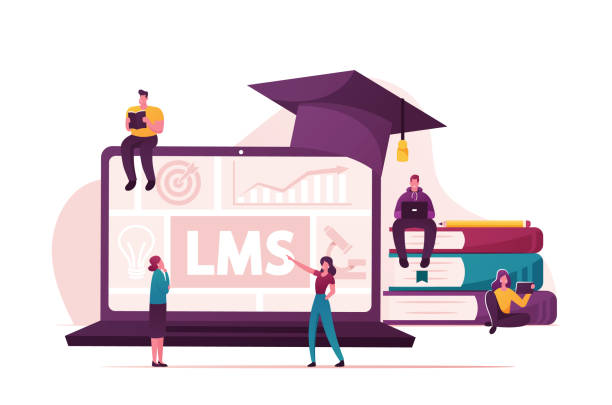Learning Experience Platform: What Is It All About

The LMS market is being challenged by a new product category called “Learning Experience Platform” (LXP). So, exactly what is an LXP? Is it a shady new LMS variety? Is an LMS replaced by it? Can it coexist with an LMS? Let’s investigate these and other queries regarding the mysterious LXP.
See: Top 5 UX Design Principles That Influence Learning Experience
How Learning Experience Platform Started
The first LXP products may have been introduced about 10 years ago, but the general public just started to hear about them four or five years ago.
The LXP market has fewer than two dozen providers, in contrast to the established LMS market, which has several hundreds of products.
With a few notable exceptions, the majority of the top LXP products are not sold by LMS suppliers. The LXP market has occasionally been unclear, like many other relatively recent learning technologies.
The LXP’s presence in the field of learning technology is expanding as the surrounding haze continues to dissipate.
What Sets an LMS and an LXP Apart
The LMS is primarily a management tool for training organizations that are responsible for overseeing the implementation of formal learning courses and programs.
Administrators can use it to administer compliance training, upload eLearning courseware, arrange learning events, handle registration, and distribute learning materials.
None of these activities are normally done by the LXP. Instead, the LXP serves as a conduit for individual learning. In the LXP, learning opportunities and content are found, indexed, and tagged from various source systems.
Each user is known to the LXP, which then finds information pertinent to their interests, abilities, and job function.
The LXP offers a bottom-up approach that empowers employees to take charge of their own learning and professional development in place of the traditional top-down employee training approach used by the LMS. Both strategies are crucial.
Employers can use the LMS to guarantee that staff members have undergone all required regulatory compliance training.
Using the LXP, staff members can plan and advance their longer-term professional skills as well as acquire information to assist with immediate responsibilities.
1. A Wider Perspective On Learning
Informal, micro-level, social, immersive, experiential, and adaptive learning are all becoming more prevalent.
When it comes to managing knowledge bases, eBooks, performance support tools, expert blogs, instructional games, social networks, augmented reality job aids, virtual reality simulations, etc., the LMS excels at managing courses and classes, but it falls short in other areas.
Better methods for matching the right people with the relevant opportunities and content are required by organizations.
2. Change in Favor of Self-Directed Learning
Employee learning and development was long seen as being primarily the responsibility of businesses and their training divisions.
Many businesses now demand that employees take charge of their own professional growth and learning.
An LXP is ideally suited to the transition from prescriptive training to self-directed learning, which calls for a different kind of support approach.
3. User experience is given more attention
The confusing prompts, needless clicks, large course catalogs, inadequate search features, and generally unimpressive appearance and feel of their LMS frequently irritate learners.
An LXP utilizes many of the same strategies used by well-known retail sites that structure themselves around our browsing and purchase preferences to give us better, faster methods to engage with pertinent material.
4. Machine Learning Advancements
Many software applications are being improved thanks to machine learning. Instead of requiring Big Data in the past, recommendation engines can now predict a user’s wants with greater accuracy and less data sets.
Those with little time to search, pick, and sort through the noise may benefit greatly from better search results and highly relevant recommendations.
How An LXP Works
Sometimes it has been difficult to pinpoint what makes an LXP. Although though their products are more LMS than LXP, a few gamified, social, and video-focused LMS suppliers have referred to them as LXPs.
LXP products have developed to the point where a core set of characteristics that are shared by all of them has arisen in recent years.
The category can be defined with the help of these fundamental abilities. It’s crucial to keep in mind that LXP products are unique, each with a unique blend of these features.
To locate the solution that best meets the demands of your firm, a structured approach to LXP evaluation and selection is advised. Features that make the LXP unique include:
Aggregation of content:
The informal and formal content housed in other systems can be accessed using an LXP. Several LXP products do not contain content, in contrast to an LMS, which houses eLearning courseware and other course resources.
Instead, they index and link to content that is stored in the LMS, knowledge bases, electronic bookshelves, document management systems, professional blogs, social networking sites, licensed content, and other repositories of your company.
Tags for content:
The LXP’s capacity to apply a customer organization’s metadata schema to classify material uniformly across all of its content repositories is a crucial component.
The efficacy of the LXP and its value to end users are ensured by appropriate taxonomies and careful content tagging.
Effective User Prediction:
The majority of LXP products employ predictive logic to ascertain which material is most likely to be significant to a specific user.
The user’s profile information (such as job role, department, and place of employment), search and content usage patterns, self-reported skill gaps, chosen areas of interest, and commonalities with other users can all be used as predictors. These predictors are used by the LXP to concentrate search results and generate suggestions.
The LXP starts to surface content as you use it that is extremely pertinent to your own employment context, skill level, and professional development objectives.
Users are in charge:
Users can manage their own learning objectives and activities thanks to the LXP’s wide range of features.
Users can discover their strengths and areas for development with the aid of skill-based self-assessments. Users can designate their areas of interest using topic checklists.
Users are able to create and manage their own individual learning programmes.







